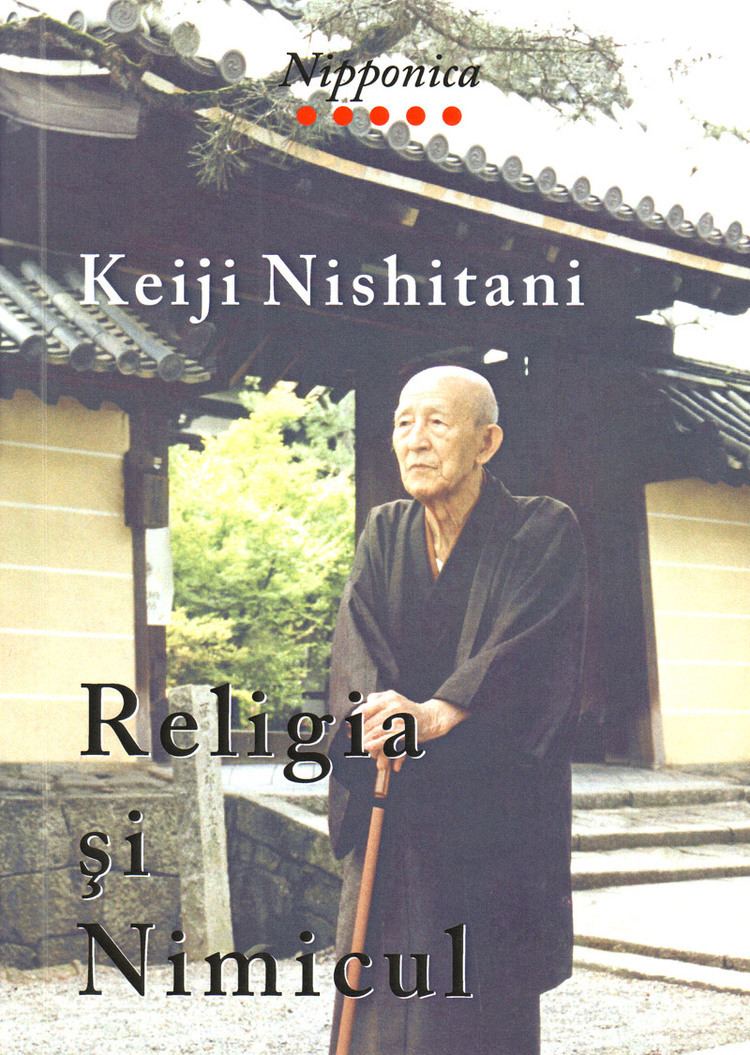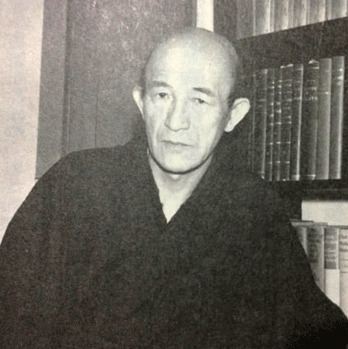Role Philosopher Name Keiji Nishitani | ||
 | ||
Born February 27, 1900 ( 1900-02-27 ) Died November 24, 1990, Kyoto, Kyoto Prefecture, Japan Books Religion and Nothingness, The self‑overcoming of nihilism, On Buddhism, The Philosophy of Nishita, La Religion y La NADA | ||
Keiji nishitani on heidegger in japan english subtitle
Keiji Nishitani (西谷 啓治, Nishitani Keiji, February 27, 1900 – November 24, 1990) was a Japanese philosopher of the Kyoto School and a disciple of Kitarō Nishida. In 1924 Nishitani received a Ph.D. from Kyoto University for his dissertation "Das Ideale und das Reale bei Schelling und Bergson". He studied under Martin Heidegger in Freiburg from 1937-9.
Contents
- Keiji nishitani on heidegger in japan english subtitle
- Keiji nishitani and buddhist existentialism in japan
- Thought
- References

He held the principal Chair of Philosophy and Religion at Kyoto University from 1943 until becoming emeritus in 1964. He then taught philosophy and religion at Ōtani University. At various times Nishitani was a visiting professor in the United States and Europe.

According to James Heisig, after being banned from holding any public position by the United States Occupation authorities in July 1946, Nishitani refrained from drawing "practical social conscience into philosophical and religious ideas, preferring to think about the insight of the individual rather than the reform of the social order."

Keiji nishitani and buddhist existentialism in japan
Thought

On Heisig's reading, Nishitani's philosophy had a distinctive religious and subjective bent, drawing Nishitani close to existentialists and mystics, most notably Søren Kierkegaard and Meister Eckhart, rather than to the scholars and theologians who aimed at systematic elaborations of thought. Heisig further argues that Nishitani, "the stylistic superior of Nishida," brought Zen poetry, religion, literature, and philosophy organically together in his work to help lay the difficult foundations for a breaking free of the Japanese language, in a similar way to Blaise Pascal or Friedrich Nietzsche. Furthermore, Heisig argues that, unlike Nishida, who had supposedly focused on building a philosophical system and who, towards the end of his career, began to focus on political philosophy, Nishitani focused on delineating a standpoint "from which he could enlighten a broader range of topics," and wrote more on Buddhist themes towards the end of his career. In works such as Religion and Nothingness Nishitani focuses on the Buddhist term sunyata (emptiness/nothingness) and its relation to Western nihilism. However, Nishitani always wrote and understood himself as a philosopher akin in spirit to Nishida insofar as the teacher—always bent upon fundamental problems of ordinary life—sought to revive a path of life walked already by ancient predecessors, most notably in the Zen tradition. Nor can Heisig's reading of Nishitani as "existentialist" convince in the face of Nishitani's critique of existentialism—a critique that walked, in its essential orientation, in the footsteps of Nishida's "Investigation of the Good" (Zen no Kenkyū).
Among the many works authored by Nishitani in Japanese, are the following titles: Divinity and Absolute Negation (Kami to zettai Mu; 1948), Examining Aristotle (Arisutoteresu ronkō; 1948); Religion, Politics, and Culture (Shūkyō to seiji to bunka; 1949); Modern Society's Various Problems and Religion (Gendai shakai no shomondai to shūkyō; 1951); Regarding Buddhism (Bukkyō ni tsuite; 1982); Nishida Kitaro: The Man and the Thought (Nishida Kitarō, sono hito to shisō; 1985); The Standpoint of Zen (Zen no tachiba; 1986); Between Religion and Non-Religion (Shūkyō to hishūkyō no aida; 1996). His written works have been edited into a 26-volume collection Nishitani Keiji Chosakushū (1986-1995). A more exhaustive list of works is accessible on the Japanese version of the present wikipage.
